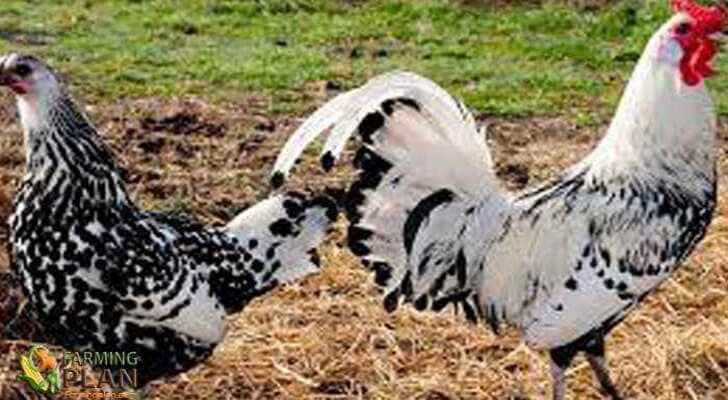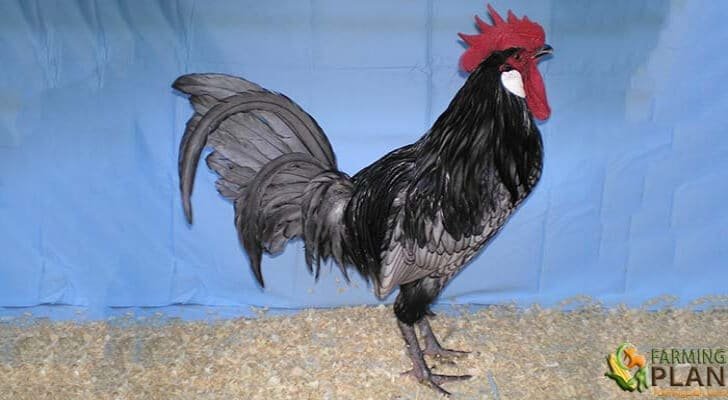The Orpington chicken that is of English origin, is a large bird, of impressive appearance. The crossing of Menorca, Plymouth Rock, and Langshans resulted in Orpington in black. The first color variety of this new breed and was to change the destination of the poultry breeding in Great Britain.
In 1893, Orpington was created in white, a variety created through the crossing of Leghorn and Dorking in white with Hamburg in black, although it was a variety of colors that did not reach much popularity at the time. The variety of Orpington tricolor is known by the term Jubilee because it was first presented in 1897, the date that coincides with the Diamond Jubilee year of Queen Victoria.

Characteristics of Orpington Chicken
The head of this species is medium long, broad, deep, small in proportion to face and free of roughness. The wide back retains its width well back to the tail. In addition, this race has an abundance of collars and falls in the males; legs are short and very separated and quills are rather thick, almost round.
The skin of the body in all varieties should be white. Breeders of this breed should strive to preserve the shape and size of the Standard. The appearance of the extreme solidity of these birds should not be attempted to ensure the development of an excessively long and fluffy plumage.
The sides of the body, sometimes mistakenly called “down,” should be comparatively straight, with a feathered full, but not profuse. The plumage of the lower body should not fall so that it covers more than a third of the cock’s fin. Nor more than a quarter of the hen’s hair.
These proportions should be reached by breeding in order to ensure the length set for the plumage in these sections. You May Also Like To Read Wyandotte Chicken
Physical Details
The Orpington chicken head is medium long, broad, deep, small in proportion; face, well-defined and free of roughness. For its part, the beak is short and vigorous, regularly with curvature. It also has large, oval-shaped eyes and is very lively. Males have a simple, moderately small ridge, firmly attached to the head. It is also perfectly straight and erect, with five teeth. The teeth of the crest are as follows:
The first and last smaller than the three teeth of the medium, fine texture; spur, closely following the shape of the head. It has barbells and earrings which are rather small; lower round contours; earrings, rather small, oblong, smooth. The neck is rather short, with a certain bow, with an abundant covering of feathers that reach well to the back. The wings are rather small, with folds, and in a horizontal position.
In addition, they are well covered by the feathers of the chest; tips of the wing, well covered by the circles, primary and secondary, wide and superposed in the natural order, with the wing, folded. The back is broad, flat on the back, apparently short. The well-maintained width along the body to the base of the tail, rising to the tail with a slight concave curve, fall, medium length, abundant.
The tail is moderately long, well open, with an angle of 35 degrees above the horizontal. But the tail does not form an apparent angle with the back where these sections meet. The chest is wide, deep, good round and well full in all its parts. In addition, the body is wide, deep, medium length, straight, extending well forward and the feathers are moderately full. You May Also Like To Read Cochin Chicken
The plumage is very profuse, not as soft, loose and feathery as the Cochinchina, nor as tight and hard as a fowl’s. This species has legs and thighs, thick, rather short and almost hidden by the feathers of the body. They have a soft feather cover; quills, rather short, well separated, vigorous, smooth; fingers, medium length, straight, strong, well separated.
Weight
The weight of the roosters reaches to oscillate between 4 kg. While the hens come to weigh 3 kg. For their part, the chickens weigh 3 kg. While the cocks come to weigh 2 kg.
Special Feature
The Orpington chicken has a very calm character. Makes medium eggs (55 – 60 gr.). They lay small, pink eggs. It has a more than acceptable setting and is a great incubator, but due to its large size, it is not advisable to let it incubate. Should be cutting frequently the male’s spurs, because being very heavy, if it slides during intercourse, it can hurt the females.
Cut the spurs before put them together to breed. In addition, it is necessary to trim all the feathers around the cloaca, so much of the female as of the male. And thus be able to facilitate copulation, but no egg will be able to fertilize.
The Lion color has a uniform tint of rich chicken low before gold. There is also black plumage, with glossy black-green plumage. While white variety, it comes with pure white plumage. And the species of blue color has of the bottom of the plumage blue slate lined with darker blue. Positive white enamel on the ear; beak, quills or skin, yellow; legs too high.
Conclusion
As you can see, the Orpington chicken is a dual-purpose breed. They were bred in England and are meant to be kept for both egg production and meat. However, they became exclusively show birds because of their appearance and docile nature. If you’re interested in raising chickens yourself, we recommend reading our blog post on what it takes to raise them (you’ll find some helpful advice!). Good luck!
As A References: Wikipedia


